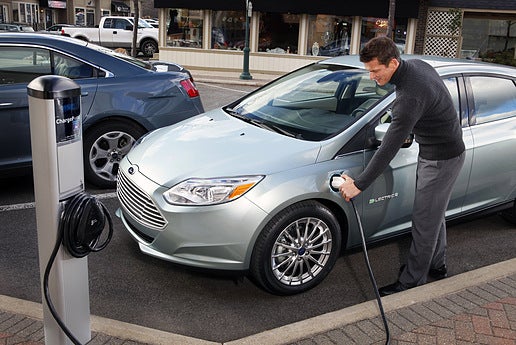This commentary originally appeared on our Texas Clean Air Matters Blog.
San Antonio’s Southwest Research Institute (SwRI) brings Texas the latest example of an intelligent, demand-side resource that can play an active role in the power grid and offset the use of fossil-fuel power plants. Late last month, SwRI announced that its innovative vehicle-to-grid system got the green light from the Electric Reliability Council of Texas (ERCOT), the grid operator, to participate in the state’s electricity market. This system is able to control the charging and discharging for a fleet of electric delivery trucks, meaning that when the supply of electricity struggles to meet demand, the intelligent vehicle charging system can simply stop charging (thus lowering demand). This technology will significantly increase grid reliability, thanks to its quick response time, and effectively deter the need for firing up another dirty power plant.
In order to avoid a blackout, the supply of electricity to the power grid must equal the electric demand from customers. Conventionally, this balance is maintained by power plants that remain on stand-by, ready to respond at a moment’s notice. Every hour of the day, ERCOT precisely controls these power plants to keep the grid balanced. In the process, a power plant has to rapidly increase or decrease its power output, which decreases its efficiency and increases its carbon and pollution footprint, much like an a car revving its engine.
To modernize our electric system, experts have proposed using demand-side resources – defined here as energy efficiency, demand response, renewable energy, energy storage, and even electric vehicles – to balance the electric grid in place of power plants. Smart power technologies enable ERCOT to reduce demand for energy through programs like demand response, where a customer is compensated for temporarily conserving energy use. For the first time, a customer reducing their need for electricity can provide the same service as a power plant generating more electricity. These customer-powered “negawatts” (the amount of energy not used) are advantageous because they offset power plant emissions, rather than increase them.
SwRI’s intelligent delivery truck charging system provides negawatts to ERCOT by temporarily suspending vehicle charging. During the day, electric delivery trucks carry goods to their intended destination, and then return to “refuel” with electricity in the evening, when Texas’ wind farms are most productive. SwRI’s charging management system ensures that all of the trucks are recharged before they have to make their next trip. At the same time, it counts up how many trucks are charging, and sends that information to ERCOT. If ERCOT senses a sudden shortfall in power supply, the management system interrupts charging for some of the trucks to quickly rebalance the grid.











